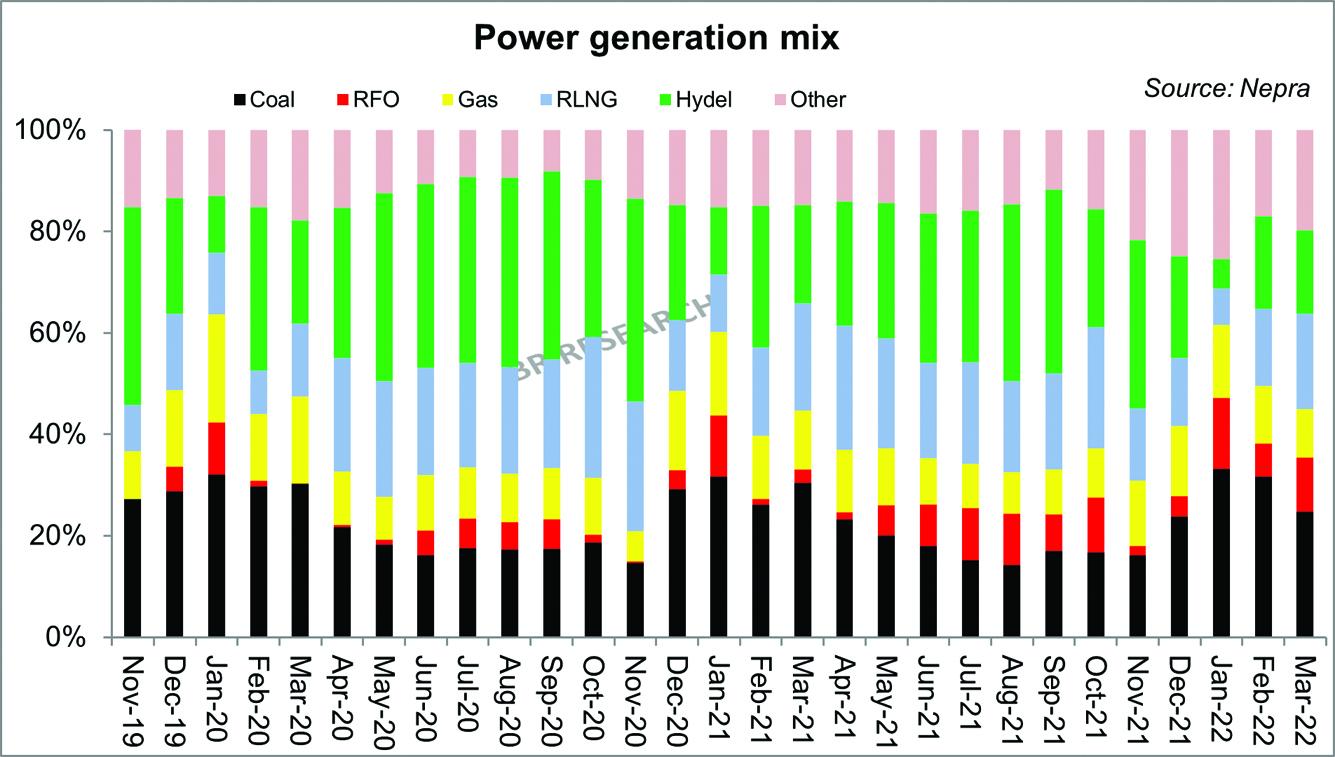Power generation went up 17 percent year-on-year for what turned out to be PTI’s last month at the helm. That is the highest year-on-year monthly increase registered during PTI’s tenure(barring March and April 2020 stemming from low Covid base). On a trailing 12-month basis, that offers a better picture, the generation is up 11 percent to an average 11.2 billion units per month.
The power generation journey came full circle in the 44 months of the former government. The 12-month moving average generation growth rate is back to where it inherited in August 2018 at a little over 11 percent. This is close to all time high moving average growth of 13 percent, achieved in early 2018. Power generation finally seems to be coming to what could be termed its natural rate of growth – as the Covid imprints now completely gone.
Before the PTI loyalists make more out of it than it deserves, let it be clear that the growth trajectory is well in line with the trend before economic slowdown in 2019 and Covid in 2020. There is also an element of increased reliance on grid electricity of industrial consumers, as captive generation has come down for a variety of reasons.

The generation mix has tilted more in favor of imported fuel, as the world grappled for gas. In Pakistan’s case, low water levels in dams made way for more thermal based generation, especially when demand was staging a comeback. Share of furnace oil and HSD based generation stood at 10 percent – highest in three years – and up from just 5 percent in 9MFY21.
Hydel’s share has dipped to one-fourth, from one-third in the same period last year, as the absolute generation went down by 8 percent year-on-year. Hydel’s loss has usually been FO’s gain. Even RLNG generation went down by over a billion units for 9MFY22.LNG suppliers kept defaulting on long-term commitments in some cases, and Pakistan (rightly) choosing not to import at skyrocketing spot rates.
Had it not been for much improved nuclear contribution, the fuel cost equation would have been much worse. Nuclear share almost doubled to 13 percent as new units came online. Nuclear power has the lowest fuel cost at Re1 per unit. FO/HSD have the highest, consistently hovering over Rs20/unit for the last six months. Coal has become dearer at a faster rate than gas and oil, as the per unit cost of power generation has shot up to Rs13-14/unit.

The fuel component has been comfortably outdoing the capacity charge component for the past few months, ever since the commodity price spiral started. The adjustment in lieu of monthly FCA for March 2022 has come at Rs3.16 per unit. This is some sort of a respite, when seen in context of monthly fuel adjustments to the tune of Rs4-5/unit in the last five months. All said, arranging timely fuel will remain a challenge for authorities, as demand moves towards peak. The best bit is pinning hopes on water levels in the dam at levels good enough to generate atleast one-third of the system demand.





























Comments
Comments are closed.